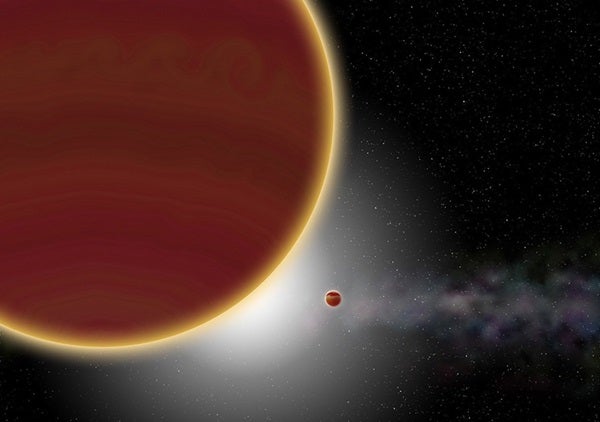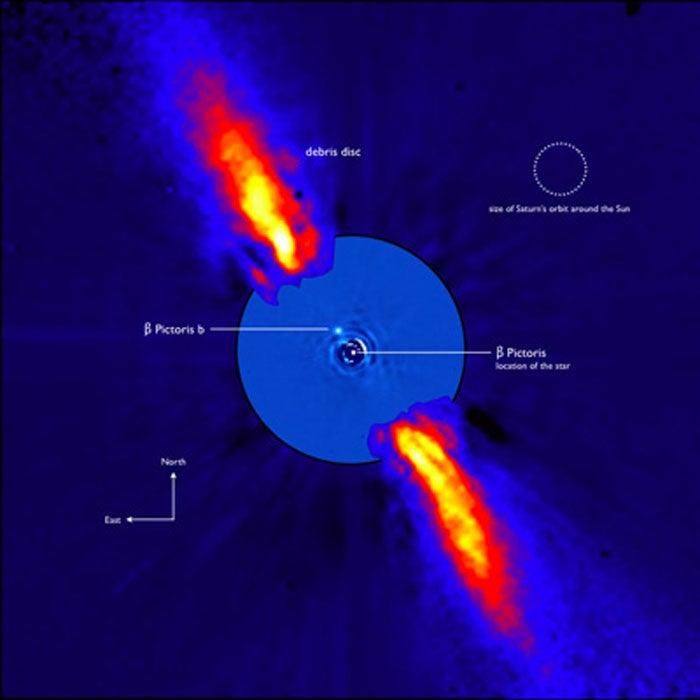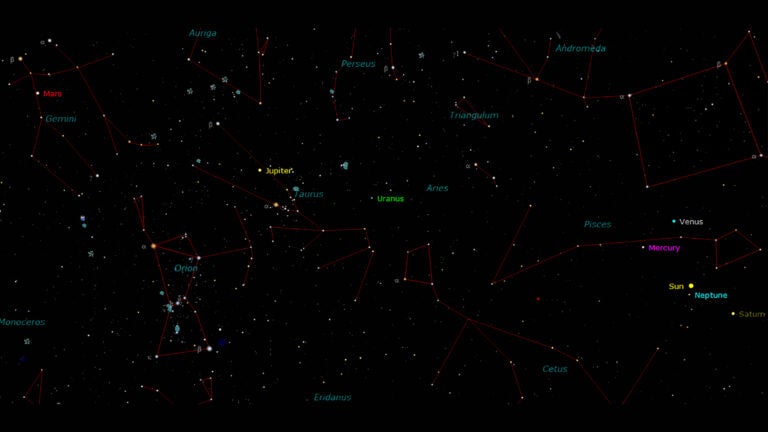The Beta Pictoris system swirls with activity — a dusty disk of debris, comets falling toward the central star, and at least one giant planet. And now, astronomers have uncovered evidence for yet another planetary Goliath, some nine times the mass of Jupiter, lurking within the mysterious system.
A closer look at Beta Pic
At only 23 million years old, Beta Pictoris, or Beta Pic, is a relatively young star. And located just 63 light-years from Earth, the system richly rewards those who study it. In fact, Beta Pic has been revealing secrets about the dynamics of planetary formation for the past 30 years.
In 2008, astronomers discovered one massive super-Jupiter there, Beta Pictoris b. However, its odd, tilted orbit indicated that another planet might be hiding in the system, says Dániel Apai, associate professor of astronomy and planetary sciences at the University of Arizona. He told Astronomy that in the past three decades, observations of the system revealed many components that seemed out of plane and misaligned. The new research could explain this. Apai says, “A violent past encounter of the two super-Jupiters may be the source of the mess in this planetary system.”
Evidence for the new planet, Beta Pictoris c, was found using the radial velocity method, which indirectly detects a planet by measuring how its host star wobbles around the system’s overall center of mass. Though this technique has helped astronomers find planets orbiting stars similar to the Sun and cooler, this is the first time it has been used to detect a planet around a star as massive and hot as Beta Pictoris, lead author Anne-Marie Lagrange of the National Centre for Scientific Research (CNRS) in France told Astronomy. “Its spectrum is very different from that of a solar-type star and much less adapted to planet searches,” she explains.
The system’s first planet, Beta Pictoris b was found differently, by direct imaging. Maxwell Millar-Blanchaer, a scientist at NASA’s Jet Propulsion Laboratory who focuses on exoplanets, told Astronomy that the news about Beta Pictoris c is incredibly exciting because of the possibilities it opens up for comparative atmospheric studies of the two planets, which have similar masses. He says, “The wealth of discoveries in the system has given us the ability to build a much more complete understanding of this system than for any other planetary system of its age, which in turn has given us a deeper grasp on its planet formation and evolution history.”
However, Ignas Snellen, an astronomy professor at the University of Leiden in the Netherlands who was not involved in the study, sounds a note of caution. “There is indeed evidence for a planet, but I personally do not think it is yet enough to be certain,” Snellen told Astronomy. If Beta Pictoris c’s existence is confirmed, he says, researchers will have to rethink their understanding of the system, including measurements of the first planet’s mass and the behavior of comets there.
Lagrange and her team have already called for researchers to reinvestigate the dynamics of the Beta Pictoris system in light of this recent discovery. She says she’s looking forward to getting more data from the Gaia spacecraft and hopes to image the new planet and determine its orbit more precisely.
Researchers published their new findings August 19 in the journal Nature Astronomy.











